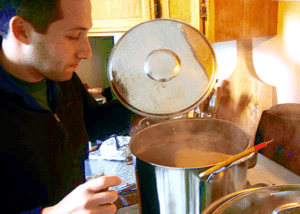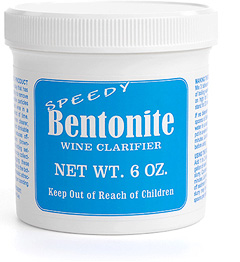 Gentlemen:
Gentlemen:
Is there a secret, or product, that will help the sediment settle more before racking? Is it usual to have a large amount of sediment; it seems such a waste of wine to discard it all.
Thank you very much. I enjoy your website and the email newsletter and am loving our attempts at winemaking!!!
Thanks again.
Sincerely,
Jean D.———-
Hello Jean,
Glad to hear you are having so much fun learning how to make your own wine. We try to help people out as much as we can with info and various wine making tips. Your question a is one we get quite often.
There are wine making products that will help to clear up the wine better and pack down the sediment more. They are called fining agents and are routinely used by wineries.
The particular fining agent I would recommend for your wine is call bentonite. We sell it as Speedy Bentonite. It will collect and drag out the particles suspended in the wine and pack it to the bottom. As the name implies, it does the job very quickly. Treating your wine a day or two before transferring it off the sediment [racking] will allow you to save more wine.
Here’s another one of my wine making tips that will save you a lot of wine as well: It is important to understand is that it is not necessary to eliminate all of the sediment with each racking of the wine. It is only important to leave most of the sediment behind. Always get as much of the wine as you can. Don’t leave any behind, even if some sediment is coming with it.
The only exception to this is the vary last racking, before bottling. This is the racking where you have to be more critical. But by the time you get to this racking there should only be a dusting of sediment, so little wine will be lost.
You may want to take a look at the article, Racking Your Wines: The When’s, Why’s and How’s, listed on our website. This will have better detail on the subject of racking your wine.
Thank you for such a great question. This is an area of wine making where many beginning winemakers have a problem.
Happy Wine Making
Customer Service
———————————————————————————————————
Ed Kraus is a 3rd generation home brewer/winemaker and has been an owner of E. C. Kraus since 1999. He has been helping individuals make better wine and beer for over 25 years.
Where Can I Find A Stone Crock For Making Wine?
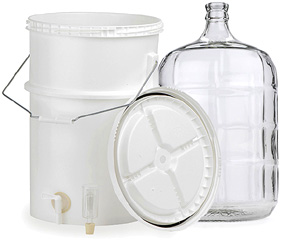 Hello Kraus,
Hello Kraus,
I’m hoping you can help me. Do you know where I can get a stone crock? I just broke the one I was going to use. We have a lot of elderberries this year and I don’t want to see them go to waste. I need to get my wine brewing.
Thank You Very Much
Tim B.———-
Hello Tim,
I’m very sorry, but we do not have a source for stone crocks.
I would like to point out that a stone crock is not necessary for making wine. In fact, stone crocks are rarely used these days for making wine. Today, home winemakers use plastic fermenters and carboys (water jugs). These items are commonly available at any winemaking shop and are easier to use than a stone crock.
The main advantage with these fermenting containers over a stone crock is that they can be sealed with an air-lock or water trap to effectively protect the wine from any airborne contaminants. It’s hard to keep wine safe in a stone crock.
A second issue is the ability to sanitize the stone crock. With plastic fermenters and carboys you simply treat them with a solution of sodium metabisulfite.
This method works fine with stone crocks too, but only if the inside glazing is not cracked. Most stone crocks you find today have been used and have these aged cracks. The inner depths of these cracks are impossible sanitize completely and become breeding-grounds for various bacteria, particularly if the crock has been used for making sauerkraut or vinegar, previously.
Add all this up with the additional fact that stone crocks are fragile and cumbersome to move, and it starts to become apparent that using carboys and plastic fermenters is a much more convenient and safer way to make wine.
Happy Wine Making
Customer Service
———————————————————————————————————
Ed Kraus is a 3rd generation home brewer/winemaker and has been an owner of E. C. Kraus since 1999. He has been helping individuals make better wine and beer for over 25 years.
Residue In My Bottles Of Wine
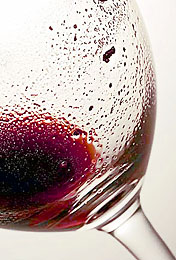 Hello:
Hello:
I have been having problems with residue in my bottles of rhubarb, choke cherry, pear and plum wine but have never had a problem with my wild grape, plum or even choke cherry before.
Bottled three weeks ago and the only one with no residue is my wild grape. Will unbottle and redo if you think it’s warranted.
Thank you in Advance
Mike
———-
Hello Mike,
It sounds like there is one of two things you could do to eliminate the residue problem from occurring in the future. First, you could try treating all your wines with bentonite. This is a clarifier that helps to drag out particles that will eventually fall out later in the bottle.
If you don’t want to use bentonite, then you should consider aging your wine in bulk for 6 months or better before actually bottling. Once the wine is completely done fermenting, give it a couple of weeks to initially clear up. Then move it into wine carboys or some other type of glass jugs. Seal them up with either cork stoppers or rubber stoppers. Also be sure to wire them down so that they don’t pop out on their own.
That same residue that is occurring in your wine bottles is what will be showing up in your wine carboys as sediment after a few months. Once all the sediment is no longer getting worse, you can then bottle the wine. It’s all about giving the wine plenty of time to drop out all particles before bottling.
As far as the residue you now have in the wine bottles, it will not hurt anything. I would recommend consuming the wine, as is, but if you do decide to rebottle, I would recommend also adding a dose of sodium metabisulfite directly afterwords to reduce the effects of air exposure when rebottling.
Best Wishes,
Customer Service at E. C. Kraus
———————————————————————————————————
Ed Kraus is a 3rd generation home brewer/winemaker and has been an owner of E. C. Kraus since 1999. He has been helping individuals make better wine and beer for over 25 years.
Why Is My Wine So Bubbly?
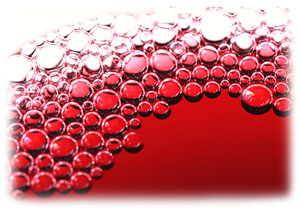 Hello:
Hello:
I’m getting ready to bottle my wine and noticed that it has a bubbly taste. Like champagne. Is this because I need to degas it? Or is there something else going on?
Ken
———-
Hello Ken,
It is very possible that you are correct in your assumption. The wine may simply need to be degassed. But you should also verify with a gravity hydrometer that the wine has actually completed its fermentation. It is possible that the bubbles you are experiencing are from a slight, but still active, fermentation.
When first learning how to make your own wine you want to get into the habit of double-checking that the fermentation has actually completed with a gravity hydrometer. Sometimes fermentation’s will stop before they are done.
If you do not know how to use a gravity hydrometer to check your wine, the article, Getting To Know Your Hydrometer, listed on our website, will give you an over view of the gravity hydrometer and its use.
If you have already determined that a slight fermentation is not the cause of your bubbly wine, then more than likely it is left-over, remnant CO2 gas from the fermentation. Putting the wine through a degassing process will be your answer.
There are a lot of ways to go about degassing a wine. You can siphon the wine back and forth between a couple of glass jugs in a splashing manner. Or, you can dump the wine back and forth between a couple of plastic fermenters. But both these methods introduce a lot of air into the wine. This is something you don’t want to do at this stage. It will promote the oxidation of your wine.
A safer way to go about it is to use a degassing paddle. A degassing paddle will agitate the wine without splashing it. This dramatically reduces the effects of oxidation. It attaches to a power drill, just like a drill bit, so it takes very little effort to use. The paddle blades also fold up so that they will fit into the small opening of a wine carboy.
Happy Wine Making
Customer Service at E. C. Kraus
———————————————————————————————————
Ed Kraus is a 3rd generation home brewer/winemaker and has been an owner of E. C. Kraus since 1999. He has been helping individuals make better wine and beer for over 25 years.
Testing The Alcohol Level Of A Finished Wine
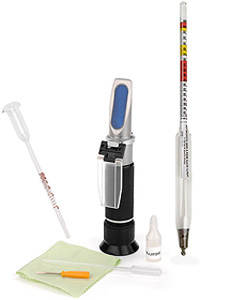 Hi Kraus,
Hi Kraus,
What kind of alcohol tester other the vinometer can I buy to measure the alcohol of my finished homemade wine?
Thanks Joshua
———-
Dear Joshua,
Of all the wine making products that exist, the vinometer is the only one that home winemakers can practically use to test the final alcohol level of a finished wine. It is somewhat accurate when testing a dry wine, but if your wine has any residual sugars, the reading will be thrown way off.
Most wineries rely on a refractometer and/or a gravity hydrometer to determine the alcohol level of a wine. They are both very accurate and easy to use. The drawback is they both require that you take two readings, one before the fermentation and another after.
If you forget or miss taking the first reading, you will not be able to determine the finished alcohol level. The two readings of either the refractometer or gravity hydrometer need to be compared to determine the alcohol level.
There are other ways of testing the alcohol in a wine beside using the vinometer, refractometer or gravity hydrometer, however this brings us into the realm of laboratory equipment and is left for only the larger wineries to practically afford.
Best Wishes,
Customer Service
———————————————————————————————————
Ed Kraus is a 3rd generation home brewer/winemaker and has been an owner of E. C. Kraus since 1999. He has been helping individuals make better wine and beer for over 25 years.
Should I Use The Juice Or The Pulp?
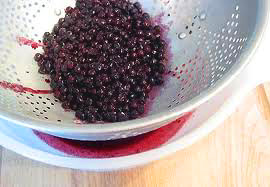
Hello-
I’ve never made wine; but, I’m slowly acquiring the wine making materials. I would like to make fruit wines mostly plum and perhaps strawberry and peach.
From what I’ve been reading it seems that either one starts with juice and does the whole fermentation process that way or that one ferments the chopped up raw fruit contained in a bag for a week or so and then continues the fermentation process in a different container less the pulp.
My question is: Will the wine be better tasting if one ferments the pulp of raw fruit or will it be better tasting if one extracts the juice of the raw fruit first presumably by cooking with a and straining or by using a steam juicer?
Thank you.
Joe
———-
Hello Joe,
When making wine with your own fruit, to achieve optimal flavor, color and body, we recommend fermenting with the pulp and skin. This is what provides most of the color and body. You can use a steam juicer to extract the juice, but you should still keep the pulp in with the fermentation for the first 5 to 7 days.
The only argument for leaving the skin and pulp out of the fermentation would be if you are trying to achieve a light-bodied wine. An example of this would be apple wine.
This is no different than how professional wineries approach making wine. In general, with red grapes they run them through the grape crusher then ferment them before running them through the grape presses. With white grapes, they crush and press before fermenting.
Best Wishes,
Customer Service at Adventures in Homebrewing
———————————————————————————————————
Ed Kraus is a 3rd generation home brewer/winemaker and has been an owner of E. C. Kraus since 1999. He has been helping individuals make better wine and beer for over 25 years.
Does Freezing The Fruit Wipe Out The Funk?
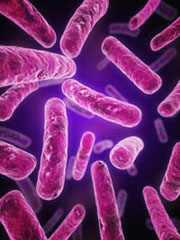 Quick question,
Quick question,
If you have frozen fruit (like I do) for months do you need to use Sodium Metabisulfite when you start the wine brewing process or does the freezing kill all the bad stuff.
Thanks,
Steven
———-
Hello Steven,
Unfortunately, freezing does not destroy mold, bacteria or other “bad stuff”. It simply puts its growth into suspension, or hibernation if you like. Freezing will damage some of the cells with freezer-burn, but not nearly enough to save your fruit from needing a sulfite treatment of some kind. You will still need to add sodium metabisulfite before using it to make wine.
Even though freezing does not eliminate potential spoilage, it does temporally stop the spoilage process. This is great for someone trying to save up enough grapes to make some homemade grape wine.
Often in a small backyard vineyard, the grapes will not ripen evenly throughout the rows. In this situation you can freeze what ripens early until you have enough saved to make a batch of wine. Just realize that you will still need to add sodium metabisulfite to the batch before fermentation and again, before bottling, regardless if the grapes have been frozen or not.
I hope this answers your question. Nothing wrong with freezing fruit. It just doesn’t eliminate the need for sulfites.
Best Wishes,
Customer Service
———————————————————————————————————
Ed Kraus is a 3rd generation home brewer/winemaker and has been an owner of E. C. Kraus since 1999. He has been helping individuals make better wine and beer for over 25 years.
Don’t Try To Out-Smart Your Wine Recipe
 Hello Adventures in Homebrewing,
Hello Adventures in Homebrewing,
I recently purchased your County Fair concord juice. I am planning to use 4 cans to make 5 gallons. I noticed the can shows 5 tsps of acid blend for 4 cans, but your wine recipe page online shows to use 1 tbsp [3 tsps] with 40# of fresh concord grapes and none in 80# version of the recipe.
Why is there a difference? I don’t want the wine to have a “bite” it can have with too much acid. What do you suggest?
Thanks Kelly
———-
Dear Kelly,
I can certainly understand your concerns. One of the last things you want to do when first learning how to make your own wine is to make a simple mistake that ends up ruining the wine.
Fortunately, for us home winemakers, the County Fair products have all had their acidity level standardized. This means that if you add the amount of Acid Blend called for in the homemade wine instructions on the side of the can, your wine will have the right amount of acidity to bring your wine into perfect balance.
You may have also noticed that you have a choice of using anywhere from 1 to 4 cans of concord to make five gallons, depending on how much body you want the wine to have. As the number of cans you decide to use goes up, the amount of Acid Blend you will need goes down.
This is counter-intuitive to some beginning winemakers. Many believe that the more fruit involved, the more Acid Blend you need to add. The real truth of the matter is that most of the acid that is in a wine recipe comes from the fruit itself, or in this case, the cans of fruit. So if you are using more cans, you need less Acid Blend to augment the acidity level.
This is also why the two Concord wine recipes on our Wine Recipe Page call for different amounts of Acid Blend. One is using 40 pounds of Concord and needs some Acid Blend, whereas the other calls for 80 pounds and needs no Acid Blend. This leads to another one of my favorite wine making tips:
“Don’t think you’re smarter than the wine recipe. Follow it.”
Best Wishes,
Customer Service at Adventures in Homebrewing
———————————————————————————————————
Ed Kraus is a 3rd generation home brewer/winemaker and has been an owner of E. C. Kraus since 1999. He has been helping individuals make better wine and beer for over 25 years.
Beer Brewing 101: The Basics
Looking to begin your brewing career? E. C. Kraus has you covered with all the basic beer making equipment and beer brewing tips to jump in and get started. Below we share all the key components needed to become an expert brew master.
True Brew Handbook: This is the essential guidebook for the beginning beer maker. Full of recipes and necessary ingredients, this handbook guides you through the process step by step, carefully explaining the purpose of each ingredient along the way.
Screw-Top Fermenter: Fermenters are an integral part of the beer (or wine) making process. Fermenters are buckets that generally hold an upwards of 5 gallons, and come with an airtight lid specially designed to aid in the fermentation process. Fermenters are designed with a faucet for racking and bottling, as well as a hose for easy transfer.
Triple Scale Hydrometer: A hydrometer allows you to keep track of the fermentation process and determines alcohol content in both beer and wine. The hydrometer is very important, as it lets you know when your brew is ready to be bottled!
Double Lever Capper: This product allows you to cap bottles with ease. This is an important part of the process, as it is necessary to ensure your beer is properly sealed after bottling.
Beer Bottle Brush: This type of brush is specially designed for cleaning beer bottles. It can effortlessly clean both 12oz and 22oz bottles, and can even be used to clean champagne bottles or soda pop bottles.
Foot Of Hose: Hose is necessary for transferring the finished beer to the bottles.
5 oz. Jar CleanPro SDH: This cleans your beer making equipment. It is used to sanitize, clean, and deodorize both beer and wine making equipment such as fermentation vessels, tubing, air-locks, and utensils. This can also work well on surfaces such as glass, stainless steel, and plastics.
Brewer`s Best Ingredient Kit: This kit comes with everything you need to brew your own beer. Pick from a variety of indulgent flavors such as American Amber, Irish Stout, Red Ale, Vienna Lager, or many many more! Each kit makes 5 gallons of home brew.
Ready to get started? Luckily Adventures in Homebrewing has you covered. We want to make the beer making process as simple as possible, so we combined all beginners’ necessities into one! Check out our Beer Brewing Kit, which includes everything listed above, and even comes at a specially discounted price!
I Put My Grapes In My Steam Juicer, Stems And All!
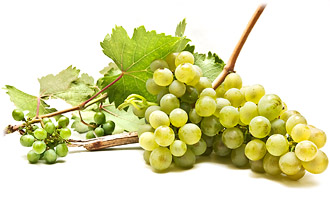 Hello Kraus,
Hello Kraus,
I made 5 gallons of grape juice by using a steam juicer. In this process the stems were still attached to the grapes. Do I need to do anything special from the normal wine making process? I was told the stems contain pectin and may require additives.
Thank you,
Henry
———-
Hello Henry,
I believe what your friend was referring to is the tannin that is in the stems of the grapes. Tannin is also found in the seeds and skins.
Some tannin in wine is a good thing. It helps the wine to clear after fermentation, and it helps to keep the wine stable while it is in the bottle. But too much tannin can cause the wine’s flavor to become extremely dry and puckering, particularly in its finish. Too much tannin can also cause a bottle of wine to develop dark dusty deposits over time. This is the excess tannin dropping out of the wine.
For these reasons wineries do not want there wines to be overcome with tannins. While they do allow a few pieces of stems to get into the wine, a huge majority of them are removed by processing the grapes through a grape destemmer. This is something that is done even before the grapes are ran through the grape presses.
In the case of your homemade grape wine, your friend’s concerns may be well founded. It depends on how much stem was actually put in the steam juicer. If you are talking about the little short pieces that are attached to the grape, then there is no issue. If you are talking about whole clusters of grapes being put in the steam juice, stem and all, then there may very well be an issue.
What should be done at this point is you should go ahead and make the wine. Any excess tannin will not be a detriment to the wine at this point. Once the fermentation has completed and you have racked the wine off the yeast and any fruit particles, then you can begin to address the potential of having too much tannin in the wine.
Bentonite is a great way to remove tannin from a homemade grape wine. It is a fining agent that removes excess proteins, tannin being on of them. I would recommend treating the wine with it at this point. Just follow the directions that come with our Speedy Bentonite.
Rack the wine off the new sediment and then let it age in bulk for at least three months. Be sure that the container is the right size and does not have a lot of head-space, like a carboy or similar. Also, treat the wine with sulfites. This should always be done before bottling a wine or when leaving a wine to rest bulk.
After aging, you should be able to taste the wine and see where you are at. It is possible that the wine may need a second treatment of bentonite, but my guess is that one treatment will be enough to resolve any issues that the steam juicer may have caused with the stems.
Best Wishes,
Customer Service at Adventures in Homebrewing
———————————————————————————————————
Ed Kraus is a 3rd generation home brewer/winemaker and has been an owner of E. C. Kraus since 1999. He has been helping individuals make better wine and beer for over 25 years.

